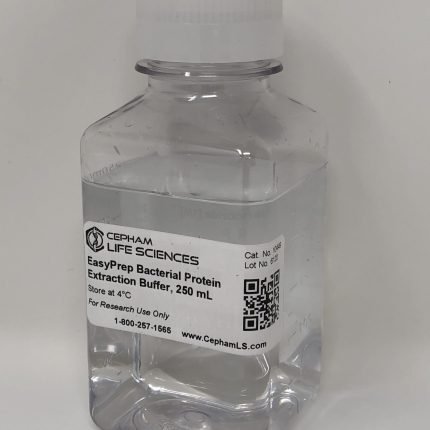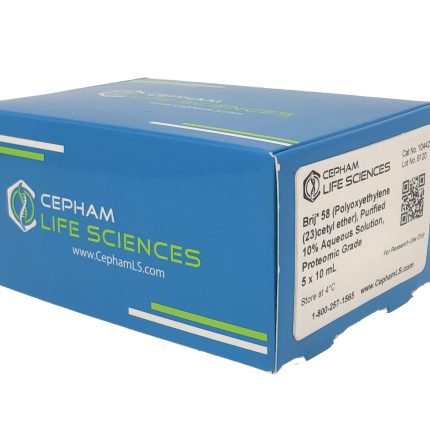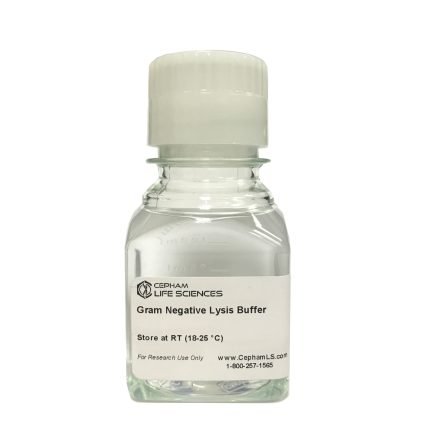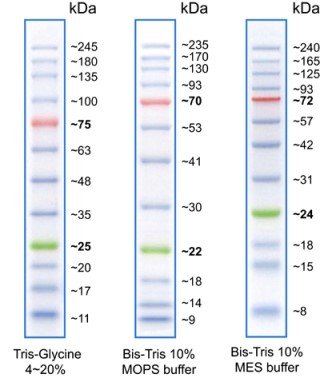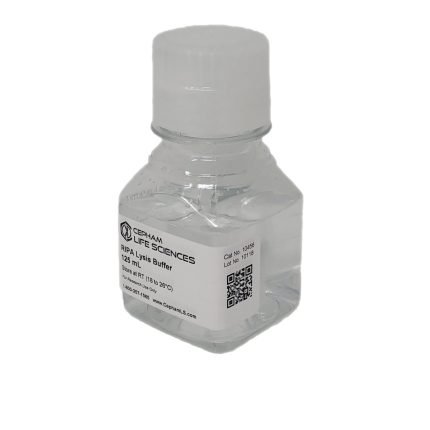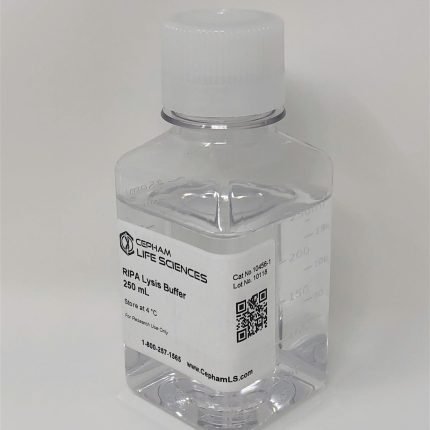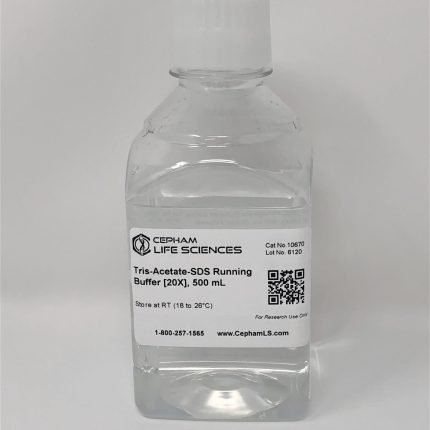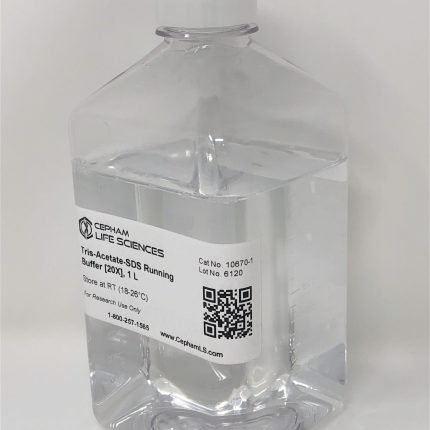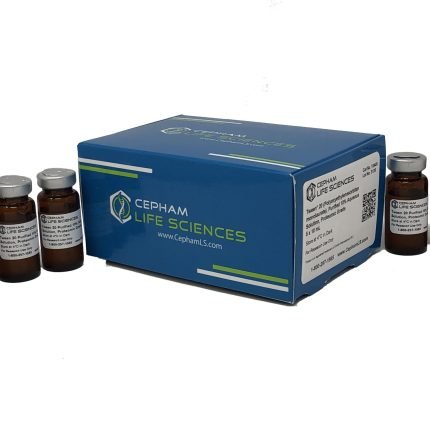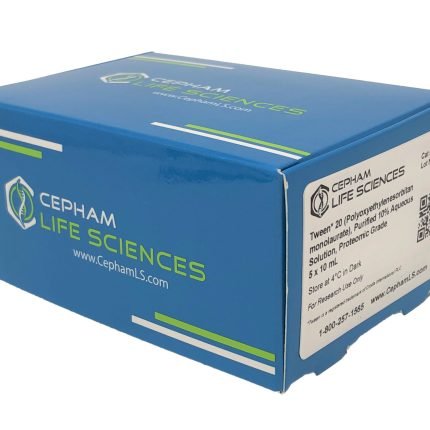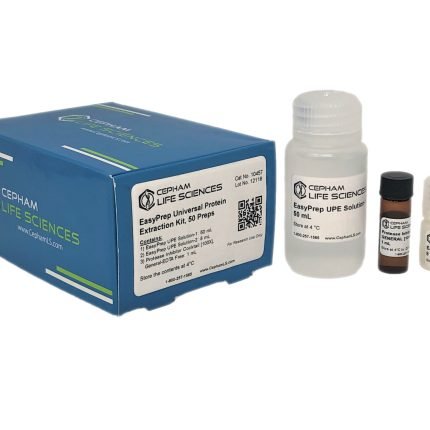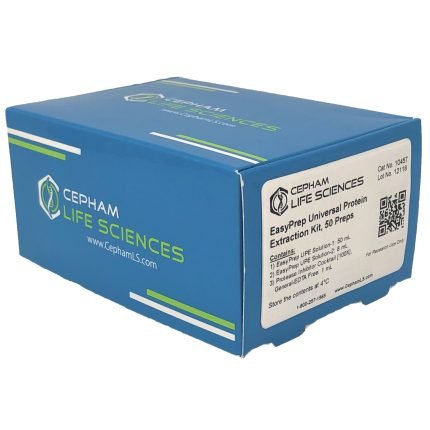
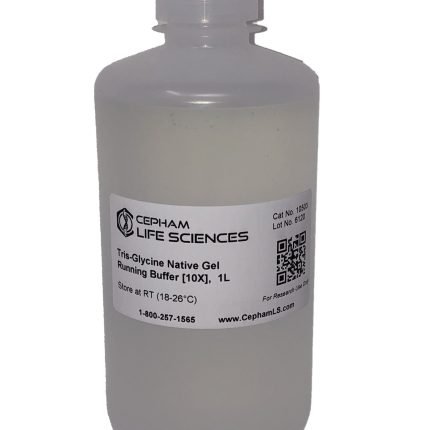
Coomassie G-250 Protein Stain
$100.80 – $290.85Price range: $100.80 through $290.85
Our Coomassie Brilliant Blue G-250 Protein Stain is a ready to use protein staining solution, by binding the Coomassie G-250 dye binds to proteins.
| Size |
1 L ,1 Gal |
|---|
Polyacrylamide gel electrophoresis is one of the most widely used methods to analyze proteins and after separation by electrophoresis, protein bands need to be detected with a suitable protein stain.
Our Coomassie Brilliant Blue G-250 Protein Stain is a ready to use protein staining solution. The Coomassie G-250 dye binds to proteins through ionic interactions between the sulfonic acid groups of the dye and positive protein amine groups and through Van der Waals attractions.
The capability of G-250 to create a rapid and convenient staining procedure is due to its particular properties and manifests a leuco form below pH 2. Solutions of the dye, dark blue black at pH 7, turn a clear tan upon acidification. The leuco form recovers its blue color upon binding to protein, apparently due to the more neutral pH of the environment around the protein molecule.
Under ideal staining conditions, a gel placed in Coomassie Brilliant Blue G-250 Stain will manifest blue protein bands on a light amber background. The protein bands develop rapidly and there is no need to de-stain, as the background color is not dark. Our stain can be used with SDS-PAGE, Native PAGE, Tricine gels with fixation step, 2-D Electrophoresis, etc. It stains the proteins with high band visibility and the protein bands up to 0.1 µg protein can be observed within 5 minutes, while staining the gel.
The sensitivity of our Coomassie Brilliant Blue G‐250 Protein Stain is up to 8 ng protein/ band, as observed in 4‐20% SDS-PAGE gel loaded with BSA.
Features:
- Ready to use solution
- Fast protein staining – in about 60-90 minutes
- Detects up to 8 ng protein per band
- Protein bands appear and visible while the gel in stain
- Compatible with fixing by alcohol
- Mass Spec compatible
PRODUCT CITATIONS:
- Dulak, Kinga et al (2022) Novel flavonoid C-8 hydroxylase from Rhodotorula glutinis: identification, characterization and substrate scope. MICROBIAL CELL FACTORIES. https://doi.org/10.1186/s12934-022-01899-x
- Pérez‑Valero, Álvaro et al (2024) Identification of a polyphenol O‑methyltransferase with broad substrate flexibility in Streptomyces albidoflavus J1074 https://doi.org/10.1186/s12934-024-02541-8

MAECENAS IACULIS
Vestibulum curae torquent diam diam commodo parturient penatibus nunc dui adipiscing convallis bulum parturient suspendisse parturient a.Parturient in parturient scelerisque nibh lectus quam a natoque adipiscing a vestibulum hendrerit et pharetra fames nunc natoque dui.
ADIPISCING CONVALLIS BULUM
- Vestibulum penatibus nunc dui adipiscing convallis bulum parturient suspendisse.
- Abitur parturient praesent lectus quam a natoque adipiscing a vestibulum hendre.
- Diam parturient dictumst parturient scelerisque nibh lectus.
Scelerisque adipiscing bibendum sem vestibulum et in a a a purus lectus faucibus lobortis tincidunt purus lectus nisl class eros.Condimentum a et ullamcorper dictumst mus et tristique elementum nam inceptos hac parturient scelerisque vestibulum amet elit ut volutpat.



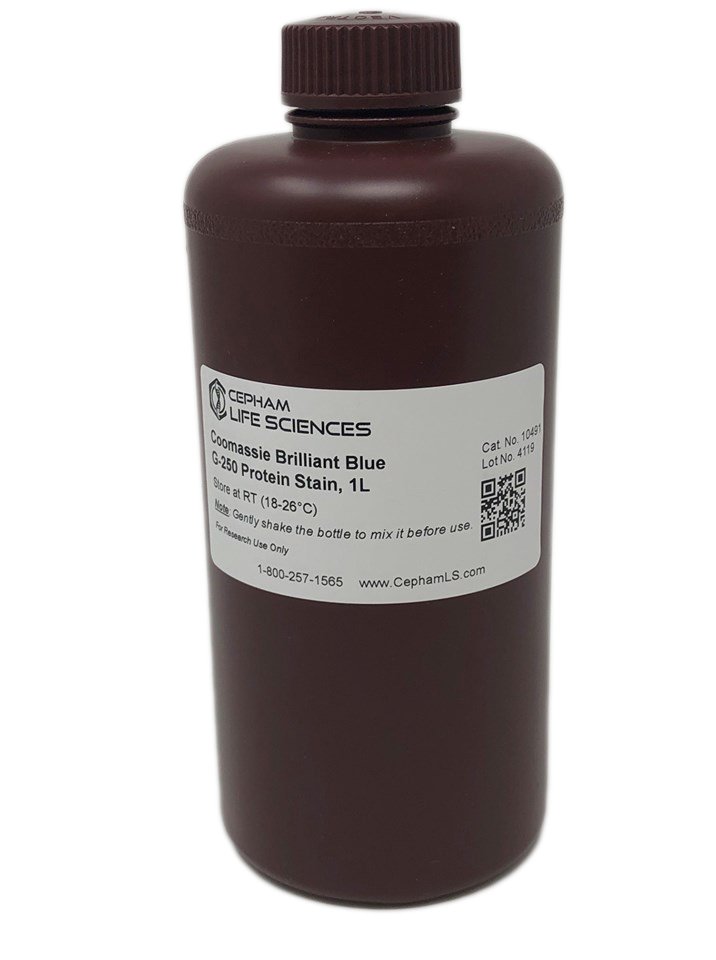
![Tris-Glycine-SDS Running Buffer [10X] Tris-Glycine-SDS Running Buffer [10X]](https://proteogene.com/wp-content/uploads/2019/02/SDS-PAGE_Gel.jpg)
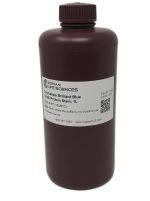
![Tris-Glycine-SDS Running Buffer [10X]](https://proteogene.com/wp-content/uploads/2019/02/SDS-PAGE_Gel-150x100.jpg)
